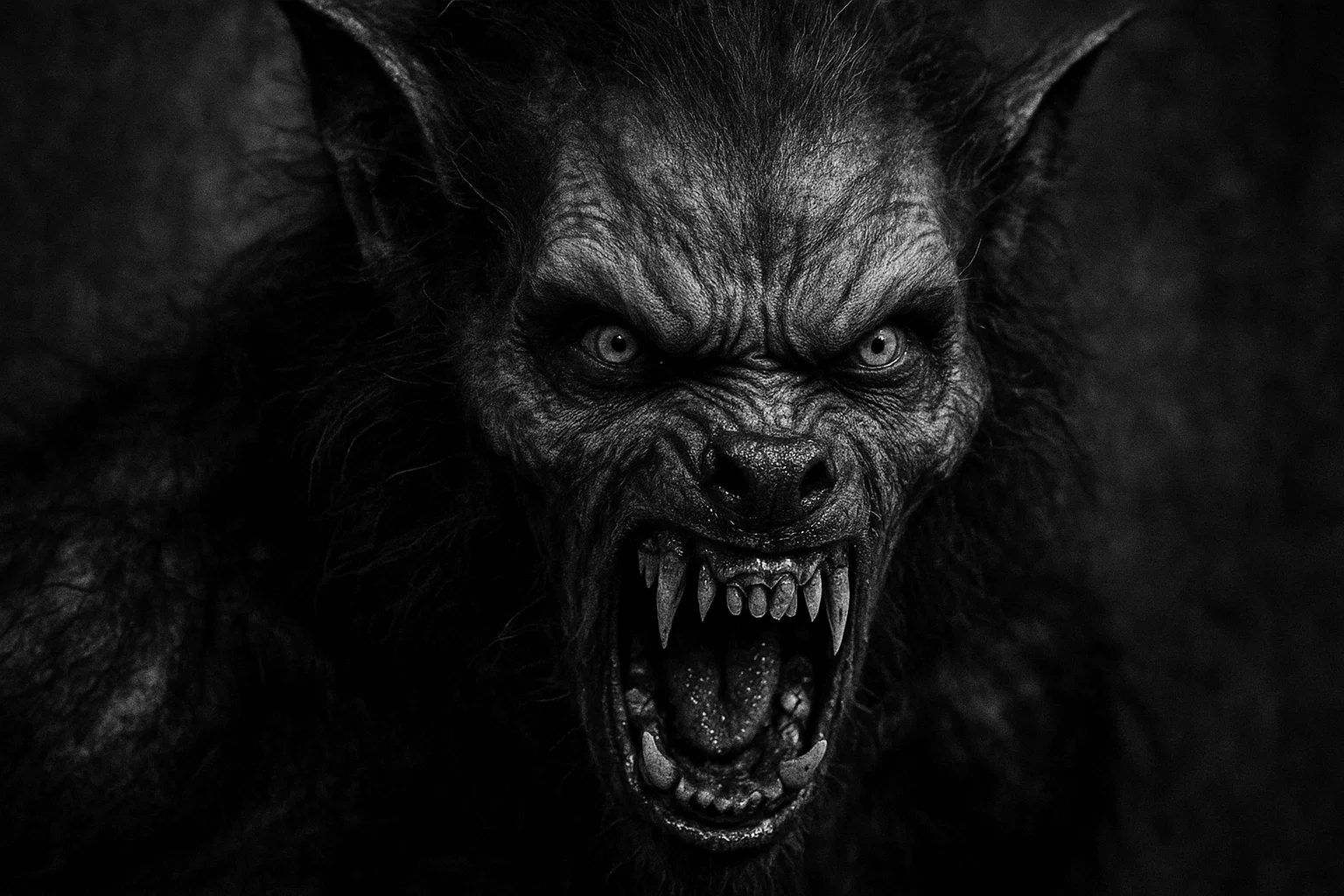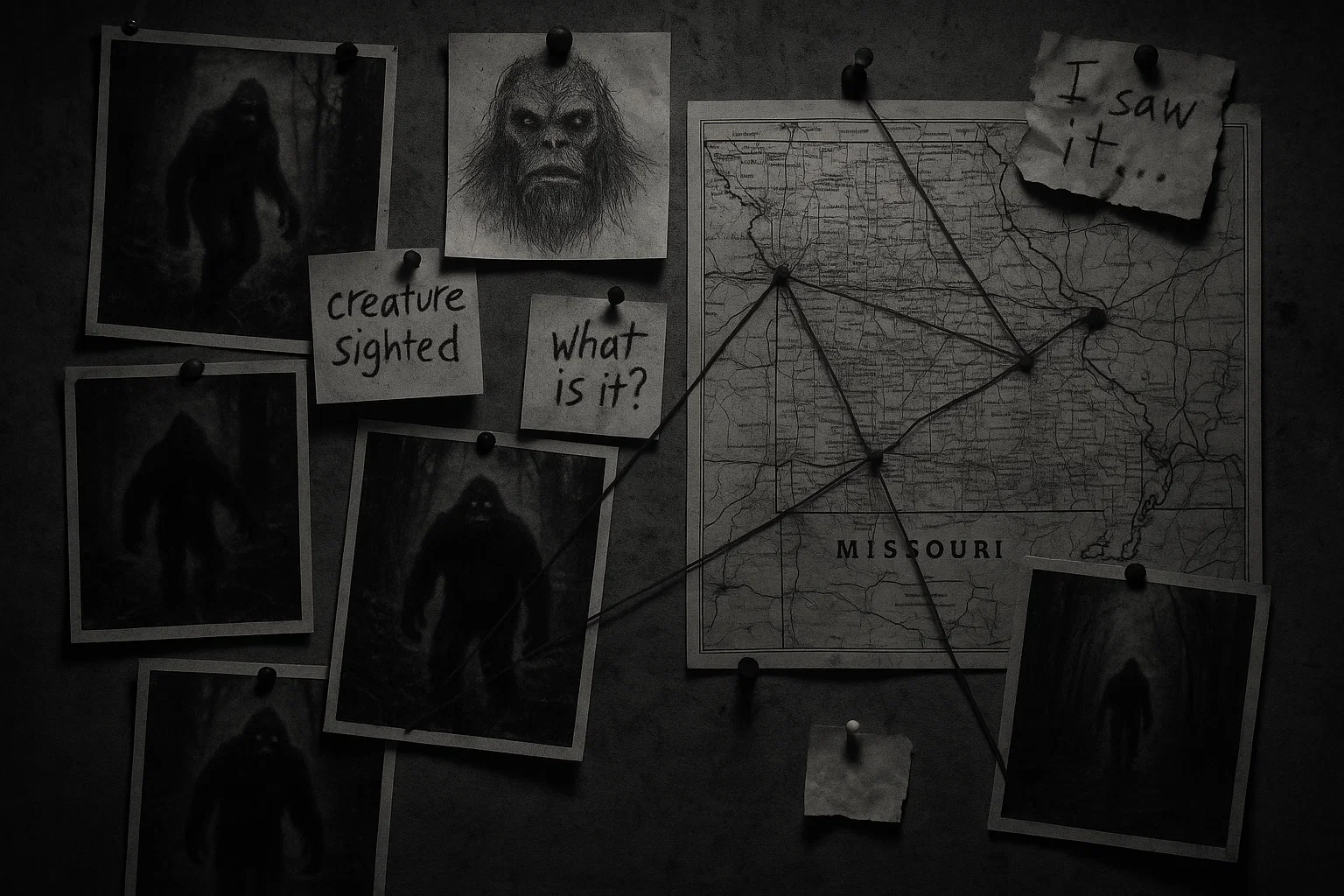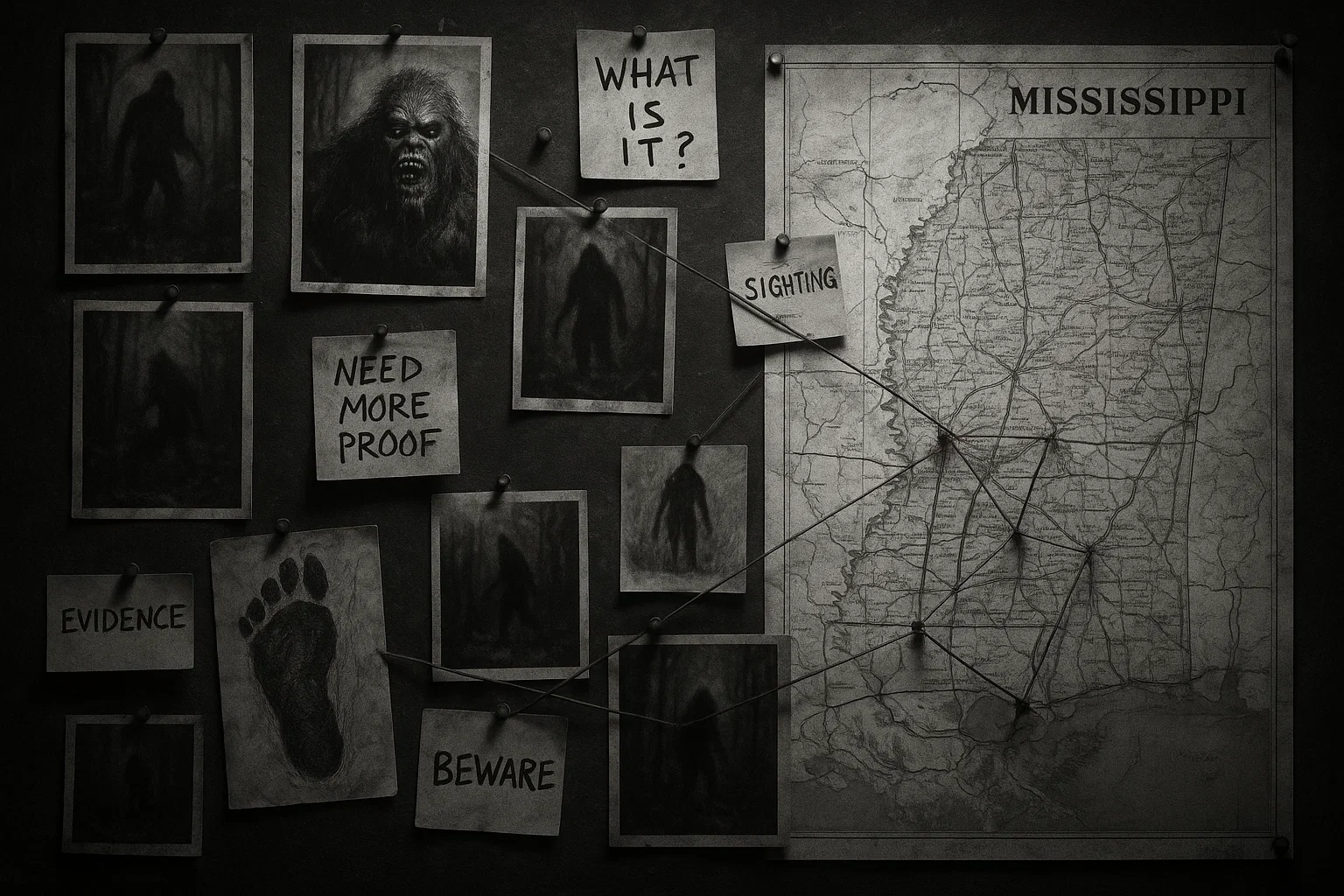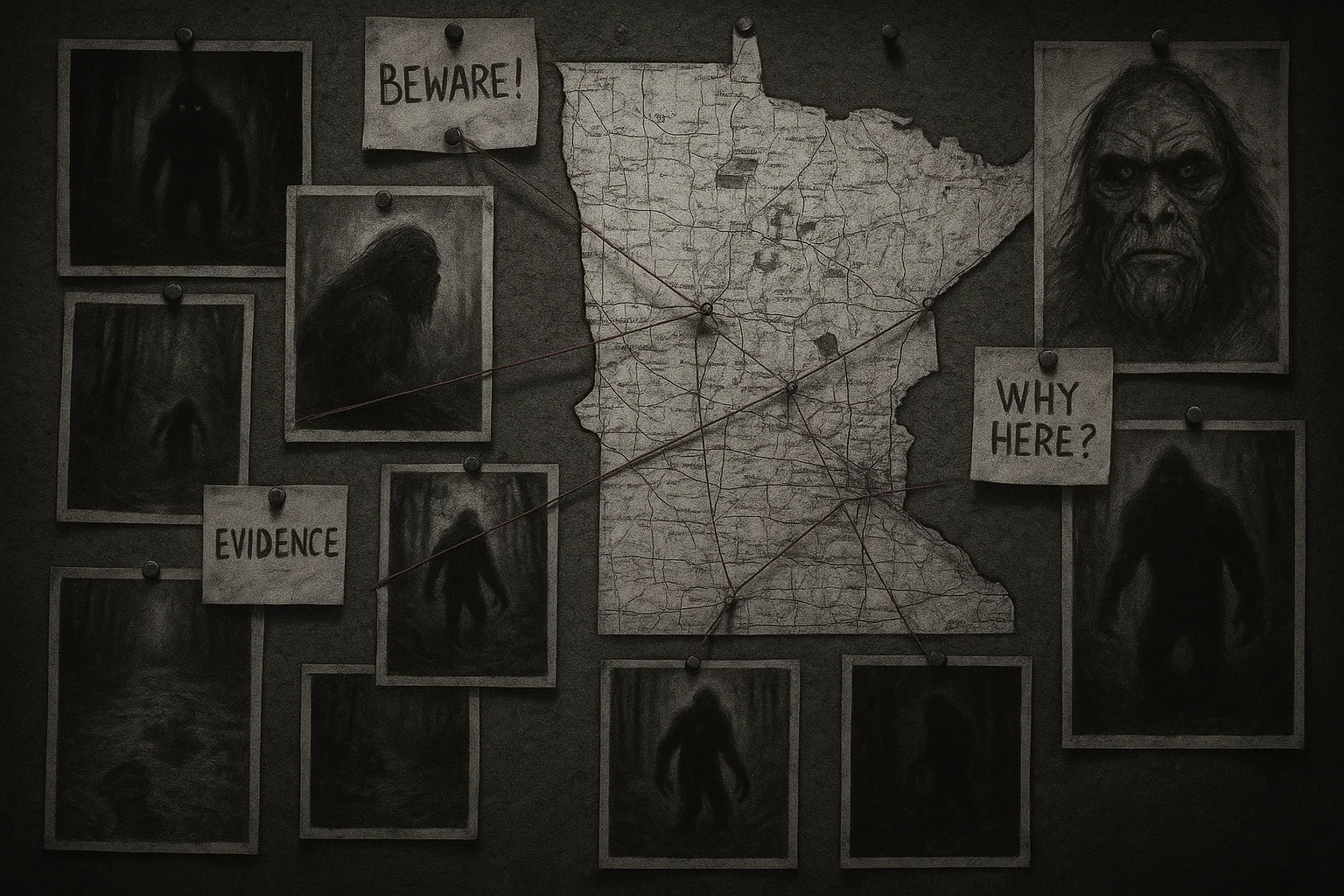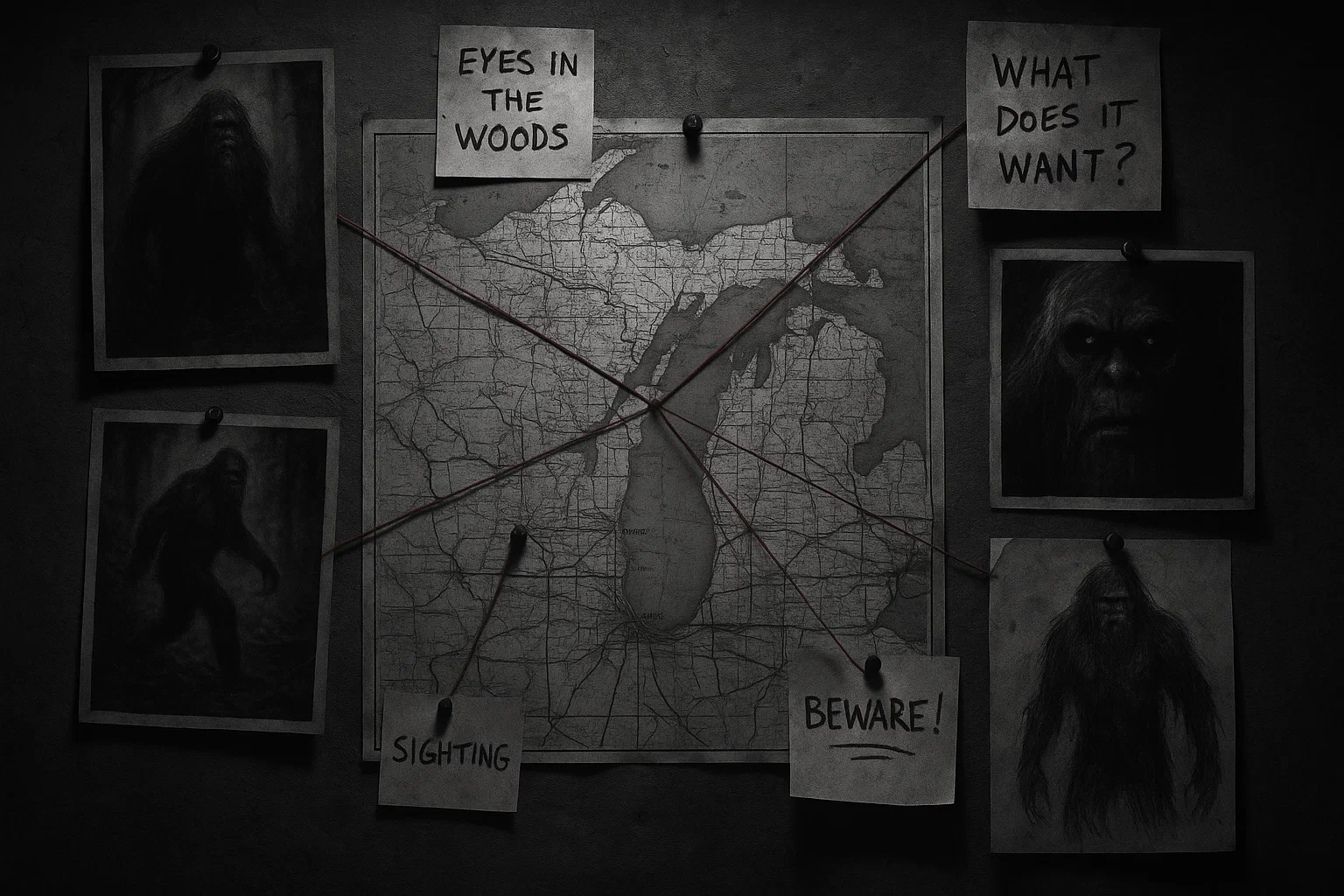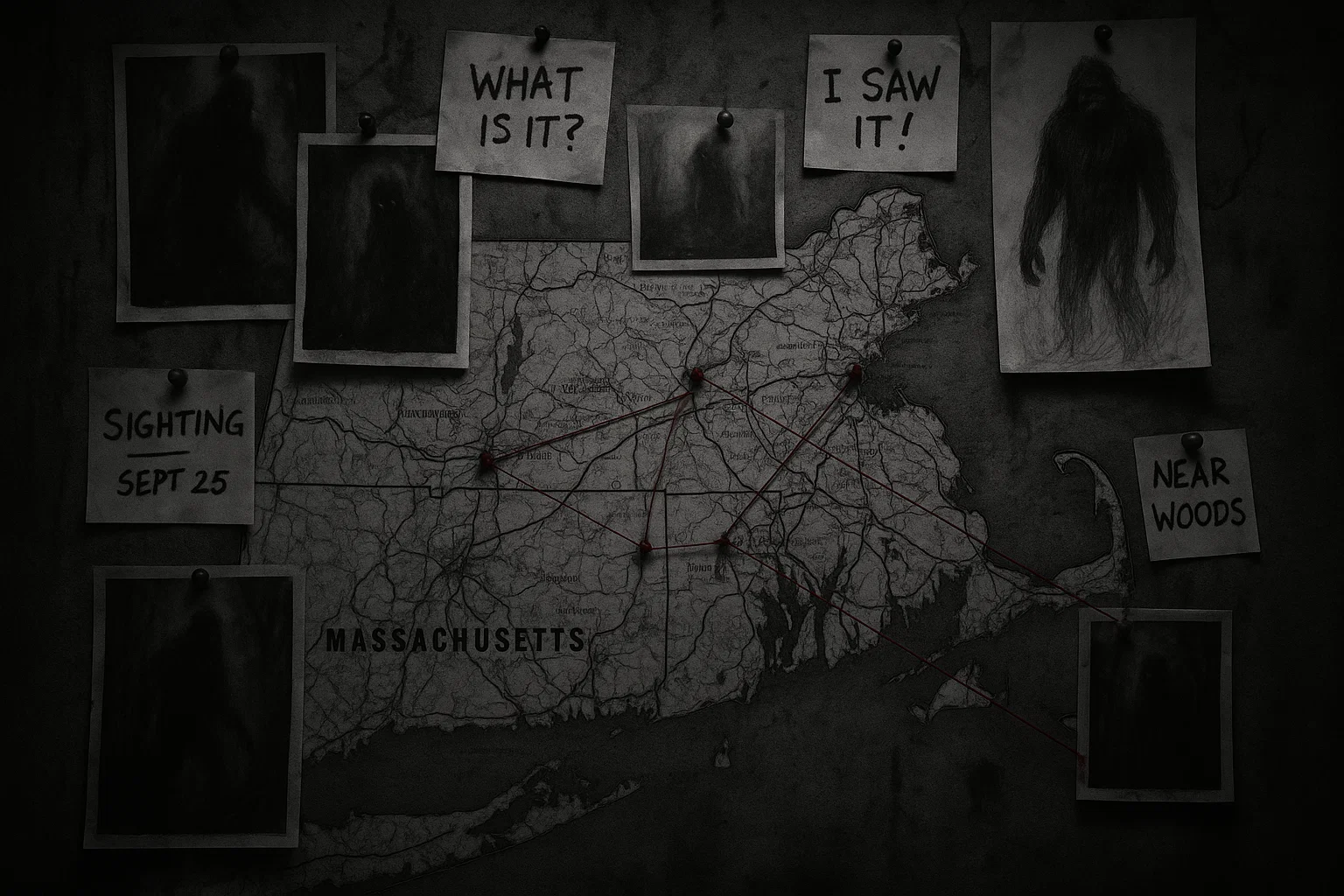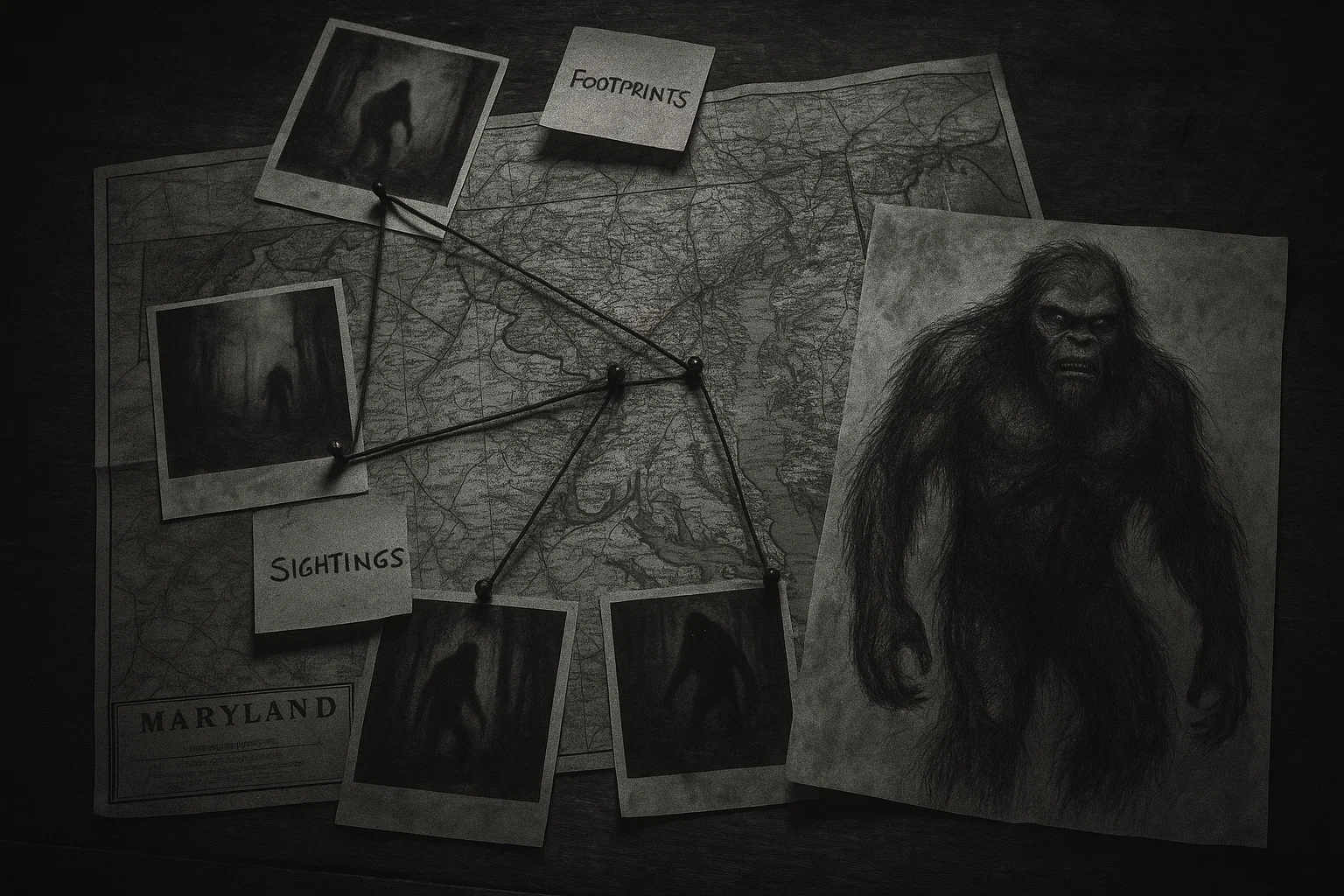In the shadows of ancient forests and under the eerie glow of a full moon, types of werewolves emerge from whispered legends, each more mysterious than the last.
These shapeshifters, caught between human and beast, haunt tales across centuries, their transformations driven by bloodlines, curses, or savage bites.
From ferocious creatures prowling medieval villages to enigmatic figures in modern lore, the types of werewolves weave a gripping saga of instinct and identity, hinting at secrets yet to be unleashed.
Table of Contents
Types of Werewolves Ranked by Power
| Rank | Type of Werewolf | Power Level | Key Strengths | Key Weaknesses |
|---|---|---|---|---|
| 1 | Hybrids | Very High | Combine werewolf strength, speed, and vampiric immortality; versatile in combat. | Vulnerable to silver and sunlight; often outcast, lacking pack support. |
| 2 | Demonic | Very High | Enhanced strength, dark magic (e.g., shadow manipulation, fear inducement); driven by evil intent. | Bound to demonic pacts; no redemption, often isolated. |
| 3 | Ancient | High | Centuries of experience, vast knowledge, enhanced abilities; often mentor or lead. | Burdened by loneliness; can become bitter or detached. |
| 4 | Shapeshifters | High | Voluntary transformation, superior control; often leaders in communities. | Constant struggle to balance human and wolf instincts. |
| 5 | Fire Werewolves | High | Control flames, immune to heat; devastating in combat with fiery claws or breath. | Impulsive, prone to unintended destruction. |
| 6 | Lunar-Blessed | High | Enhanced strength, senses, and protective abilities during lunar phases; maintain control. | Powers tied to specific lunar events, less effective otherwise. |
| 7 | Earth Werewolves | Moderately High | Create rocky armor, cause tremors; nearly indestructible as land guardians. | Slower, less agile; tied to terrestrial environments. |
| 8 | Air Werewolves | Moderately High | Manipulate wind, extreme agility; evade capture with tornadoes or gusts. | Less physical strength; reliant on speed over brute force. |
| 9 | Water Werewolves | Moderately High | Breathe underwater, manipulate waves or whirlpools; adaptable protectors. | Limited effectiveness outside aquatic environments. |
| 10 | Pack Hierarchy Werewolves (Alphas, Betas, Gammas, Deltas, Omegas) | Moderate | Varying strength by role (Alphas strongest, Omegas weakest); pack dynamics enhance influence. | Power depends on role; Omegas lack authority, Alphas face leadership burdens. |
| 11 | Hereditary | Moderate | Superhuman strength, better transformation control; tied to bloodline legacy. | First transformation unpredictable; family secrets cause strife. |
| 12 | Magical/Enchanted | Moderate | Transform via artifacts (e.g., wolf pelts, amulets); versatile with magic. | Reliant on external objects, vulnerable if lost or destroyed. |
| 13 | Shadow Werewolves | Moderately Low | Blend into shadows, spectral nature; ideal for stealth and espionage. | Less physical strength; spectral form limits direct combat. |
| 14 | Good | Moderately Low | Use powers for protection, strong moral compass; heightened senses aid guardianship. | Often self-restrained, avoiding full power to prevent harm. |
| 15 | Neutral | Low | Focus on balance, restrain transformations; often isolate to avoid harm. | Lack of offensive power; reliance on external support (e.g., restraints). |
| 16 | Astral | Low | Transform spiritually on the astral plane; elusive and mystical. | Limited physical impact; transformations are non-physical. |
| 17 | Moon-Dependent | Low | Strong during lunar phases, but transformations are involuntary and chaotic. | No control, often amnesiac; vulnerable post-transformation. |
| 18 | Cursed | Very Low | Forced transformations, often permanent; strong but tragic. | No control, driven by curse; often hunted or shunned. |
| 19 | Feral | Very Low | Raw strength and bloodlust; act on pure instinct. | No rational thought or control; easily hunted due to recklessness. |
| 20 | Vargulfs | Very Low | Extreme strength but unstable; kill without purpose. | Mental and physical deterioration; outcast, easily targeted. |
Power criteria for ranking the different types of werewolves:
- Physical Strength: Raw strength, speed, and combat ability.
- Control: Ability to control transformations or maintain humanity.
- Supernatural Abilities: Additional powers (e.g., dark magic, elemental control).
- Influence: Role in pack hierarchy or cultural significance.
- Weaknesses: Vulnerabilities that may reduce their power (e.g., lack of control, external dependencies).
Types of Werewolves Based on Origins
Werewolves’ origins define their powers, weaknesses, and narratives. Whether born, bitten, or cursed, each type carries unique traits rooted in folklore.
Hereditary Werewolves
Hereditary werewolves inherit their transformative abilities through bloodlines, a trait passed from generation to generation.
Unlike those cursed or bitten, they are born with the potential to shift, though the ability often requires a trigger, such as adolescence, intense emotions, or ritualistic awakening.
In Eastern European tales, noble families like the Čanturić clan of Croatia or the Łowczyński of Poland were rumored to forge pacts with wolf spirits, granting power but binding their descendants to a dual existence. These families often guarded their secret fiercely, as exposure could lead to exile or execution.
The first transformation typically occurs during puberty, marked by feverish dreams, heightened senses, and an irresistible pull toward the wilderness.
Hereditary werewolves may wield superhuman strength and agility, but their connection to the wolf spirit demands balance. Some embrace their nature, honing control over shifts, while others view it as a bloodline curse, tearing families apart.
In Slavic lore, these werewolves were both revered and feared, seen as protectors of their lands yet potential threats if their instincts overpowered reason.
You May Also Like: Slavic Vampires: The Terrifying Truth About the Upyr
Infectious Werewolves
Infectious werewolves arise from a bite or scratch, their transformation a contagion-like spread echoing medieval fears of diseases such as rabies. This type dominates modern portrayals, where a single wound can doom a victim to a life of lunar-driven shifts.
In 17th-century Livonia, Thiess of Kaltenbrun claimed a bite from a mysterious figure—described as a “man in black”—cursed him to become a werewolf. Unlike typical tales, Thiess insisted he used his powers for good, battling witches and demons to safeguard villages.
The initial transformation is excruciating, often accompanied by fever, muscle spasms, and a loss of humanity. Victims may awaken with no memory of their actions, surrounded by evidence of their rampage.
This type’s lack of control makes them tragic figures, their human lives unraveling as they grapple with their beastly urges. In folklore, infectious werewolves were often hunted, their condition seen as a plague requiring eradication.
Cursed Werewolves
Cursed werewolves are victims of supernatural punishment, transformed against their will by a witch, shaman, or deity. In Greek mythology, King Lycaon offended Zeus by serving human flesh, earning a permanent wolf form as retribution.
Similarly, in 1st-century Rome, Petronius’s Satyricon describes a soldier cursed into a mindless beast, prowling graveyards. These werewolves have no choice, their humanity stripped by a higher power’s wrath.
Cursed transformations are often permanent or tied to specific conditions, such as breaking the curse through a heroic act or ritual. The cursed bear their affliction as a mark of shame, their lives a cycle of guilt and desperation.
In medieval Europe, such tales warned against hubris or sacrilege, reinforcing moral codes through fear of divine retribution.
Shapeshifters
Shapeshifters control their transformations, shifting at will without reliance on lunar cycles or curses.
In Norse mythology, Ulfhednar warriors donned wolfskins, channeling lupine strength in battle, their ferocity making them near-invincible. These werewolves often hold leadership roles within their communities, their mastery over their dual nature earning respect.
In modern fantasy, shapeshifters balance human emotions with animal instincts, often portrayed as wise yet conflicted figures.
Their ability to shift voluntarily grants tactical advantages, allowing them to blend into human society or unleash their wolf form when needed.
However, this control comes at a cost, as maintaining balance requires immense discipline. Shapeshifters may struggle with the temptation to abandon humanity entirely, embracing the freedom of the wild.
Feral Werewolves
Feral werewolves have surrendered to their animal instincts, losing all traces of humanity. In Romanian folklore, Pricolici are malevolent spirits who return as ravenous wolves after death, driven by bloodlust.
These creatures act on impulse, hunting without reason or remorse. In Native American tales, feral werewolves are warrior spirits who’ve lost their purpose, their madness a cautionary tale against unchecked aggression.
Physically, ferals are often gaunt, with matted fur and wild eyes, their appearance reflecting their detachment from the human world. They pose a significant threat, as their unpredictability makes them impossible to reason with.
Communities in folklore often banded together to hunt ferals, viewing them as abominations.
You May Also Like: Jinmenken: Japan’s Terrifying Human-Faced Dog
Vargulfs
Vargulfs, from the Old Norse term for “rogue wolf,” are among the most dangerous werewolves. These beasts have deteriorated mentally and physically, their rampages driven by chaos rather than hunger.
Unlike ferals, who act on instinct, Vargulfs kill without purpose, leaving trails of destruction. Modern lore portrays them with dark eyes and emaciated bodies, their form a grotesque mockery of both wolf and human.
Vargulfs often result from extreme isolation, prolonged trauma, or exposure to dark magic. Their instability makes them outcasts, even among other werewolves.
In stories, they are hunted by packs to prevent their chaos from spreading, their existence a warning of what happens when the wolf spirit consumes the soul.
Spiritual and Magical Classifications
Some werewolves draw power from supernatural forces beyond physical transformation, tapping into rituals, spirits, or enchanted objects. These types are mysterious, their abilities unpredictable.
Demonic Werewolves
Demonic werewolves gain their powers through pacts with malevolent entities, trading their humanity for supernatural might.
In 1589 Germany, Peter Stumpp, known as the “Werewolf of Bedburg,” claimed the Devil gifted him a magical belt to transform. Such pacts often require rituals under a blood moon or at a crossroads, binding the werewolf to a path of destruction.
These werewolves wield dark magic, such as summoning shadows or paralyzing foes with fear. Unlike other types, they revel in their evil, showing no desire for redemption.
Their strength surpasses typical werewolves, but their allegiance to demonic forces makes them pariahs, feared even by their own kind.
Astral Werewolves
Astral werewolves transform on the spiritual plane, their physical bodies remaining human while their spirit takes wolf form. Rooted in shamanic traditions, they enter meditative states or use sacred herbs and symbols to project their soul.
In Norse mythology, seiðr practitioners, often women called völur, were said to send their spirits as wolves to explore the spirit world.
During the European witch trials, some accused of lycanthropy claimed spiritual transformations, their souls prowling as wolves while their bodies lay dormant.
Astral werewolves are elusive, their actions invisible to the physical world, making them both revered and suspected in their communities.
Magical or Enchanted Werewolves
Magical or enchanted werewolves rely on external objects or spells to transform.
In Nordic tales, warriors donned wolf pelts to channel lupine power, while in 17th-century France, Jean Grenier confessed to using a magical wolf skin to attack villages. Similarly, Gilles Garnier, a 16th-century hermit, claimed a mystical ointment enabled his transformations.
Artifacts like the Wolfstone Amulet or Lunar Staff are common in folklore, granting temporary shapeshifting abilities. These werewolves are vulnerable without their objects, which can be stolen or destroyed.
Their reliance on magic makes them unique, their transformations a blend of skill and sorcery.
You May Also Like: Is the Black Prince’s Ruby Really Cursed?
Alignment-Based Classifications
Werewolves’ moral choices shape their actions, from embracing chaos to seeking redemption. These alignments reveal how they wield their powers.
Chaotic Evil Werewolves
Chaotic evil werewolves thrive on destruction, their transformations a tool for terror. They relish the hunt, targeting the vulnerable—children, the elderly, or isolated villagers.
In folklore, these werewolves leave villages in ruins, their glowing ember eyes and ignited fur striking fear. Some possess abilities beyond standard lycanthropy, such as summoning flames or emitting a paralyzing roar.
Unlike other types, they embrace their monstrous side, forming alliances with dark sorcerers or demons to amplify their chaos.
Their lack of moral restraint makes them symbols of untamed darkness, their stories warning against surrendering to base urges.
Neutral Werewolves
Neutral werewolves strive for balance, seeking to coexist with humans without causing harm.
They often resist transformation, using herbal remedies, restraints, or isolation during full moons to prevent violence. Many live in remote areas, avoiding temptation, though they rely on trusted allies to secure them during shifts.
Their struggle is constant, torn between human empathy and animal instincts. This dual conflict—protecting others while craving freedom—defines their existence.
In modern tales, neutral werewolves are reluctant heroes, their restraint a testament to their strength of will.
Good Werewolves
Good werewolves use their powers for protection, acting as guardians against threats, both human and supernatural. In Livonian folklore, Thiess claimed to fight witches in Hell to save crops, a rare example of a benevolent lycanthrope.
These werewolves patrol communities during full moons, their heightened senses and strength keeping danger at bay.
Guided by a moral compass, good werewolves often form tight-knit bonds with those they protect, their heroism redeeming the werewolf’s fearsome reputation. Their stories inspire, showing that even a curse can become a force for good.
You May Also Like: What Was the Soviet Dog Head Experiment?
Classifications Based on Governing Element
Modern fantasy introduces elemental werewolves, who draw power from natural forces—fire, water, earth, and air. These types, absent from traditional folklore, enrich contemporary narratives.
Fire Werewolves
Fire werewolves command flames, their claws igniting in battle and their breath scorching foes. Immune to heat, they thrive in combat, their fiery presence a spectacle.
In fantasy novels, they are often depicted as volatile warriors, their tempers matching their element. Their ability to summon fire makes them formidable, though their impulsiveness can lead to unintended destruction.
Water Werewolves
Water werewolves are at home in aquatic environments, breathing underwater and moving swiftly through rivers or seas. They manipulate water to create waves, shields, or whirlpools, defending sacred sites like coastal shrines.
Their calm demeanor and adaptability make them natural protectors, their connection to water a source of serenity.
Earth Werewolves
Earth werewolves are the stalwarts of the werewolf world, their strength rooted in the land. They create rocky armor, cause tremors, or erect barriers to guard forests or mountains.
In modern tales, they are guardians of sacred groves, their resilience making them nearly indestructible. Their steadfast nature earns them respect as defenders of the natural order.
Air Werewolves
Air werewolves are swift and elusive, manipulating wind to disorient foes or glide over obstacles. Some legends claim they conjure tornadoes or vanish in a gust of wind, making them impossible to catch. Their agility and cunning suit them for reconnaissance or espionage, their speed a defining trait in fantasy settings.
Classifications Based on Celestial Events
The moon’s cycles profoundly influence werewolves, with some types tied to specific lunar phases, granting unique powers or challenges.
Moon-Dependent Werewolves
Moon-dependent werewolves are the archetype of lycanthropy, transforming involuntarily during full moons, blood moons, or lunar eclipses.
Their shifts are wild and uncontrollable, often leaving them violent and amnesiac. Blood moon transformations are particularly intense, amplifying strength and aggression.
This type dominates classic tales, their lunar tie a symbol of nature’s dominion over humanity.
Lunar-Blessed Werewolves
Lunar-blessed werewolves view their transformations as gifts, gaining enhanced abilities during lunar phases without losing control.
Under a full moon, they may wield protective auras or sense threats from afar. Rare and revered, they are often spiritual leaders, their powers seen as divine blessings.
Their stories contrast with the tragic moon-dependent, offering hope and purpose.
Hybrid and Modern Types
Modern media has birthed new werewolf types, blending traditional elements with innovative twists, reflecting evolving storytelling.
You May Also Like: Is Iliamna Lake Monster Real? 13 Sightings Exposed
Hybrids
Hybrid werewolves combine lycanthropic and vampiric traits, boasting super speed, enhanced senses, and immortality. However, they inherit weaknesses like silver vulnerability and sunlight aversion.
In pop culture, hybrids are outcasts, rejected by both werewolf and vampire societies. Their dual nature makes them formidable, whether as heroes or villains, their struggles a metaphor for identity.
Manwolves
Manwolves retain human features during transformation, popularized by Hollywood’s The Wolf Man (1941). Unlike full wolves, they stand upright, their faces a blend of human and lupine.
This type, seen in The Howling (1981), balances terror with relatability, their partial humanity a source of tragedy. Manwolves are iconic, their image shaping modern perceptions of werewolves.
Lycanoids
Lycanoids are human-like werewolves with wolf-like traits—sharp claws, fangs, and heightened senses. Unlike full transformers, they remain humanoid, their intelligence intact but bloodlust a constant threat.
In Underworld’s Lycans or The Witcher’s Nivellen, lycanoids navigate a precarious balance, their partial shifts a unique take on lycanthropy.
Shadow Werewolves
Shadow werewolves are spectral, blending into darkness with ease. Part physical, part ethereal, they move unseen, their presence felt rather than seen.
Rare in folklore, they thrive in modern fantasy, their elusiveness making them ideal spies or assassins. Their shadowy form adds a layer of mystery, their origins often tied to ancient curses.
Ancient Werewolves
Ancient werewolves have lived for centuries, their longevity a result of magic or enduring curses. Wise but burdened by eternal loneliness, they’ve witnessed generations of conflict.
Some mentor younger werewolves, guiding them through transformations, while others, hardened by time, become ruthless adversaries. Their knowledge makes them pivotal in werewolf lore.
Classifications Based on Pack Hierarchy
Like wolves, werewolves often operate in packs, their hierarchy defining roles and responsibilities. This structure ensures survival and order.
Alphas
Alphas lead the pack, their dominance rooted in strength and charisma. Often the most powerful, they may control transformations or bestow lycanthropy. Alphas resolve conflicts, organize hunts, and protect their pack, with both a male and female (the Luna) sharing leadership. The Luna nurtures the pack, her role as vital as the Alpha’s.
Betas
Betas are second-in-command, enforcing the Alpha’s will and maintaining discipline. Strong and loyal, they protect the pack during hunts or battles. Often born into the role, Betas are the backbone of pack stability, their authority respected but subordinate to the Alpha’s.
Gammas
Gammas are warriors, training pack members in combat and strategizing during conflicts. They guard the pack’s territory, their prowess earning respect. Though less dominant, their role is crucial, ensuring the pack’s readiness against threats.
Deltas
Deltas support Betas, acting as lieutenants or mentors to younger members. Their role, though less prominent, strengthens pack cohesion, their guidance shaping future leaders. In some tales, Deltas scout new territories, expanding the pack’s influence.
Omegas
Omegas occupy the lowest rank, often submissive and marginalized. They diffuse tension through their humility, maintaining harmony. In some lore, Omegas possess unique resilience, their independence allowing them to survive outside pack structures. Their role, though humble, is essential.
Conclusion
Werewolves are more than mythical monsters; they are mirrors of our deepest fears and aspirations.
From hereditary bloodlines to lunar-blessed guardians, their diverse types reflect the richness of human storytelling. Rooted in global folklore, shaped by historical trials, and reimagined in modern media, werewolves continue to evolve, their howls echoing through time.
Whether cursed or chosen, they remind us of the wild within, urging us to balance instinct with reason.

